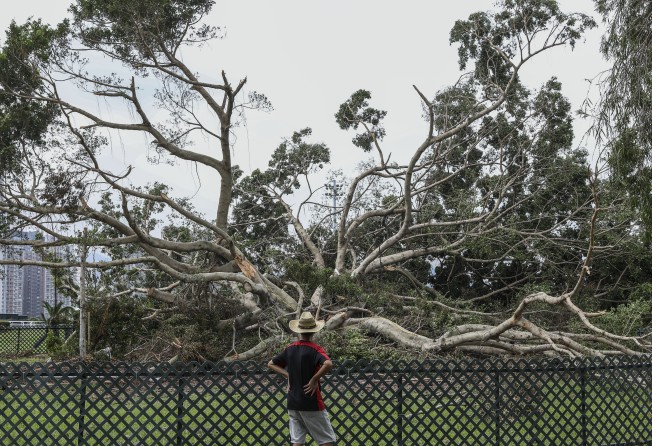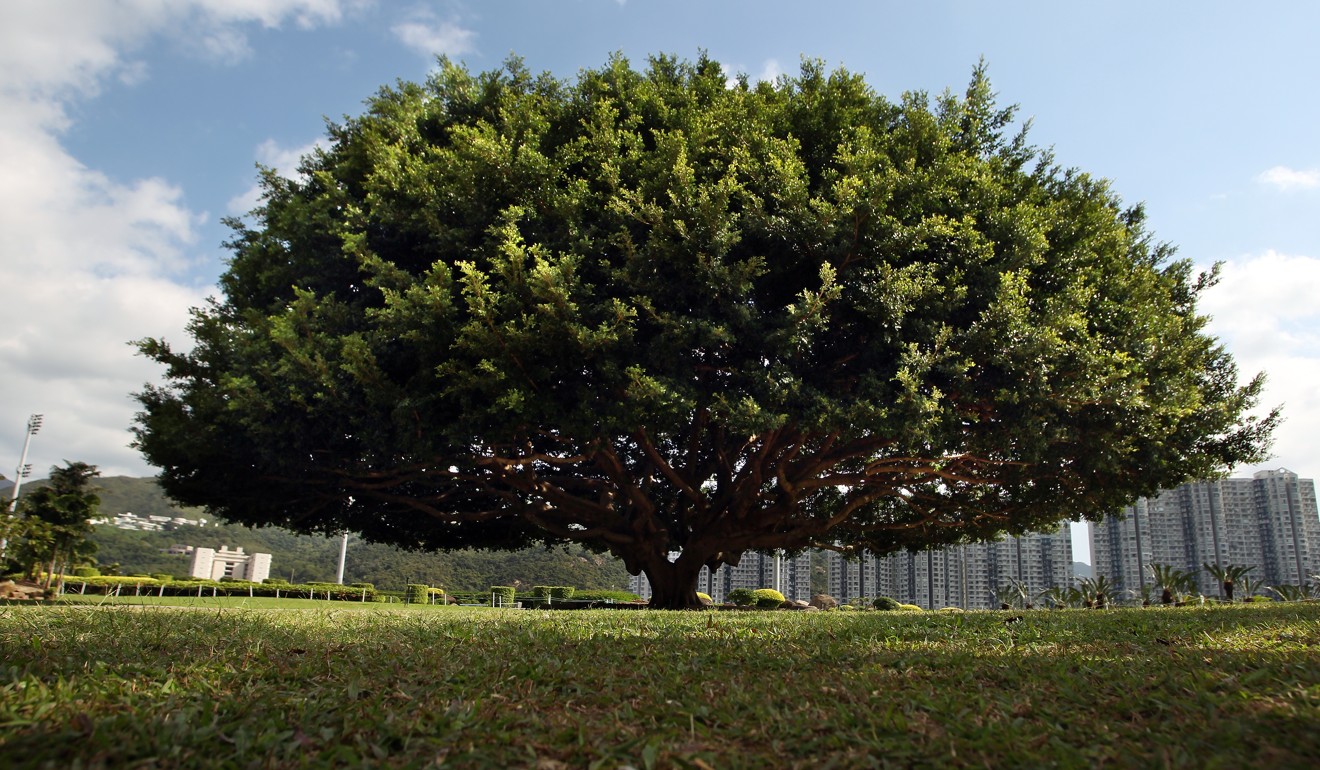Tree expert appeals to Sha Tin residents to save Chinese banyan badly battered by Typhoon Mangkhut
Hong Kong professor asks for the people of Sha Tin to come together to save the 18 metre-tall tree, after the Jockey Club said it would dispose of the damaged tree and plant a new one

A veteran tree expert appealed to Sha Tin residents on Thursday to help save an umbrella-shaped Chinese banyan tree in Penfold Park that was badly battered by Typhoon Mangkhut, despite the Jockey Club saying it would remove what was now a massive tangle of branches and leaves.
Fondly remembered by many who have visited the park next to the Sha Tin Racecourse, the tree was left severely damaged on Sunday after the severe storm swept through the city.
The Jockey Club, which manages the park, had told media earlier that landscape architects had inspected the tree and found it could not be saved. The club said it would replace it with another banyan tree.
“The tree has sufficient remaining roots”, Professor Jim Chi-yung, from the Education University of Hong Kong, said. “It can be saved by spraying the exposed roots, soil and leaves with water.” He stressed that there needed to be urgent restoration work by keeping the tree’s roots moist all the time.
“Time and tide wait for no man,” he said, quoting English poet Chaucer.

The 30-year-old, 18 metre-high banyan, which stood at the centre of the park, looked much like a centuries-old tree. It was a frequent shaded rest stop for people walking dogs and a popular spot for wedding photos.
A large crack was found in the main trunk of the tree in 2015 and while the Jockey Club carried out a series of measures, including surrounding it with eight small banyans to offer it structural support, the effectiveness was disputed by some experienced arborists.
Jim hopes to mobilise residents to help water the tree, adding that the tree is worth saving because of its outstanding form. “The tree grew up in the middle of the ground which had enough space for it to grow robust roots,” Jim said. “That’s why it looks so nice.”

To save the tree, he suggested lifting it upright, supporting it securely, adding compost to the topsoil, shielding the soil surface with mulch and irrigating it.
“Big organisations like the Jockey Club take time to act. But the tree cannot wait any more,” Jim said. “So I think residents can go there and spread water on it as a transitional measure.”
“Chinese banyan is very tough,” Jim said, adding he hoped Jockey Club could save the tree.
Scarlett Pong Oi-lan, from the district council in Sha Tin, hoped the club could lift the tree up and plant it back in the soil first for further remedial action to be taken. She posted photos of the broken tree on Facebook on Thursday.
“The tree is a landmark which left beautiful memories for lots of people,” the post said. “I hope the Jockey Club can figure out a way to save the tree!”
The club said that according to tree experts a full recovery of the tree was deemed impossible and that any subsequent rehabilitation work is challenging. But because the tree has brought many beautiful memories to Sha Tin residents, it might consider retaining its shoots for future planting in the park and turn the fallen parts into park facilities.